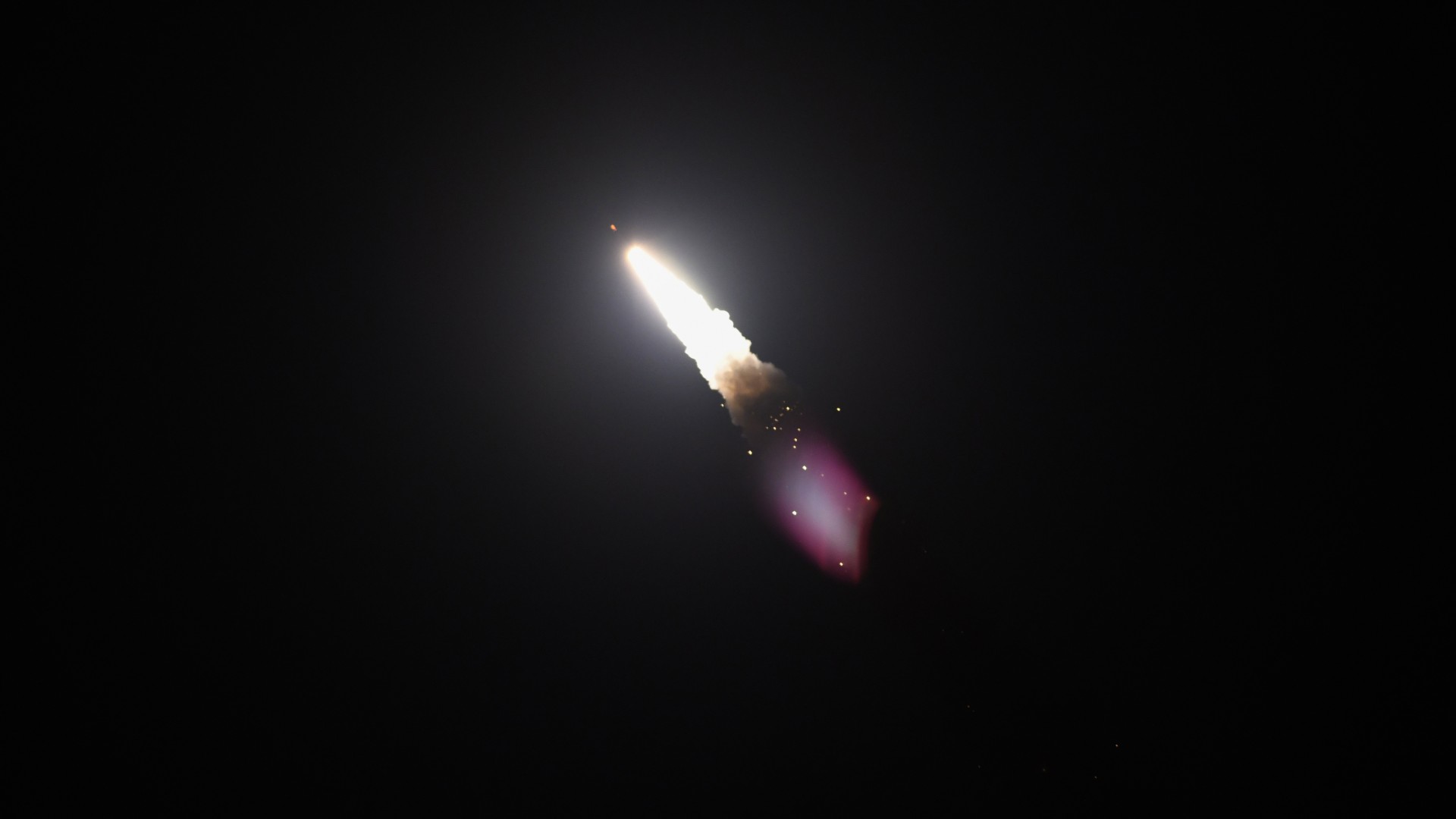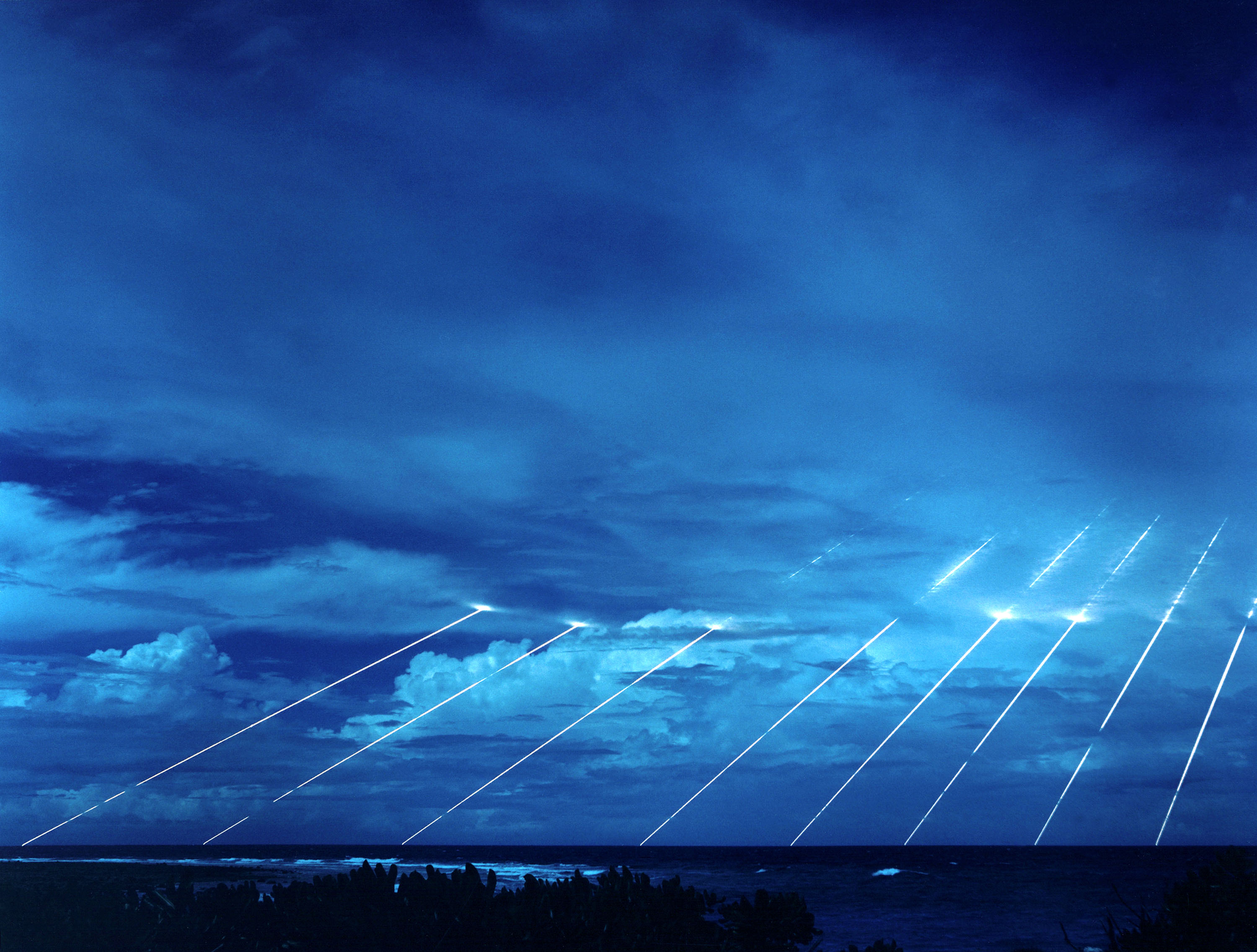US military test-launches unarmed nuclear missile on election night (video)
Launch occurred from California at 11:01 p.m. local time.
The United States military test-launched another unarmed nuclear-capable missile last night (Nov. 6).
The launch took place from Vandenberg Space Force Base in California at 11:01 p.m. local time on Nov. 5 (2:01 EDT or 0601 GMT on Nov. 6). A team of U.S. Air Force and U.S. Navy personnel oversaw the launch, which sent an unarmed Minuteman III intercontinental ballistic missile (ICBM) from Vandenberg to the U.S. military's Ronald Reagan Ballistic Missile Defense Test Site in the Marshall Islands southeast of Japan.
Like all ICBMs, the missile flew into space before reentering Earth's atmosphere. It's unknown how high the Minuteman III in this particular test flew, as the U.S. military rarely publicizes such data. However, according to a U.S. Air Force fact sheet, the Minuteman III has a maximum altitude of 700 miles (1,120 kilometers), which puts it well into low Earth orbit. For comparison, SpaceX's Starlink satellites orbit at around 342 miles (550 km).
Some ad blockers can disable our video player.
The missile in the test was equipped with "multiple targetable reentry vehicles," according to a U.S. Space Force statement, meaning it is capable of deploying independent warheads that can maneuver as they make their way through the atmosphere toward their targets. In this test, the missile's reentry vehicles traveled some 4,200 miles (6,760 km) before impacting their targets at the Reagan Test site in the remote Kwajalein Atoll.
The Boeing-made Minuteman III was the world's first ICBM to have this multiple reentry vehicle capability (also known as Multiple Independently-targetable Reentry Vehicle, or MIRV), according to the National Museum of the U.S. Air Force, and the first U.S.-made ICBM to use a solid fuel propulsion system.
Related: How intercontinental ballistic missiles work (infographic)
The command to launch the missile was sent from aboard a U.S. Navy-operated Boeing E-6B Mercury aircraft operating the Airborne Launch Control System (ALCS). This system allows crews of the ALCS aircraft to launch missiles while airborne even if ground-based launch control centers are disabled and serves as a "last line of defense and redundancy program for the nation's nuclear command and control," according to a U.S. Air Force statement.
Breaking space news, the latest updates on rocket launches, skywatching events and more!
U.S. Space Force leaders praised the success of the test and the personnel that made it possible. "This Minuteman III test launch exemplified the mission readiness, agility, and professionalism of the personnel at Vandenberg, Global Strike Command, and the U.S. Navy," said Col. Dorian Hatcher, Space Launch Delta 30 deputy commander, in the U.S. Space Force statement.
"Every test of this deterrent system at Vandenberg underscores the nation's robust capabilities and highlights the indispensable support our Airmen and Guardians provide to ensure national security."
While the test took place within days of the latest North Korean ICBM launch that saw the reclusive nation's missiles reach a record altitude, the Space Force's statement says the test was the "culmination of months of preparation."
The U.S. military tested another two Minuteman III missiles in June 2024, launching them within two days of one another. Such tests are conducted regularly as a means of deterring America's adversaries and ensuring the nation's nuclear arsenal is reliable and ready to launch.

Brett is curious about emerging aerospace technologies, alternative launch concepts, military space developments and uncrewed aircraft systems. Brett's work has appeared on Scientific American, The War Zone, Popular Science, the History Channel, Science Discovery and more. Brett has degrees from Clemson University and the University of North Carolina at Charlotte. In his free time, Brett enjoys skywatching throughout the dark skies of the Appalachian mountains.


